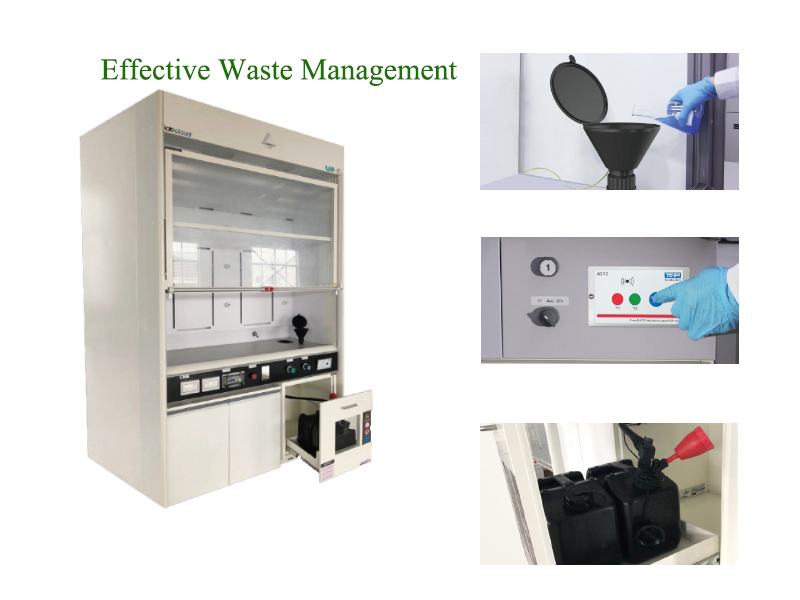Table of Contents
n today’s world, where environmental concerns are at the forefront of scientific discussions, creating a sustainable lab is not just a trend—it’s a necessity. Green building practices in laboratory design not only reduce environmental impact but also lead to significant cost savings and improved working conditions. This comprehensive guide will explore best practices for designing energy-efficient labs that meet the highest standards of sustainability without compromising on functionality or safety.
Why Sustainable Laboratory Design Matters
Before diving into the specifics of green lab design, it’s crucial to understand why sustainability in laboratories is so important:
Environmental Impact: Laboratories consume 3-4 times more energy per square foot than typical office spaces.
Cost Efficiency: Sustainable labs can significantly reduce operational costs over time.
Regulatory Compliance: Many regions now have strict environmental regulations for new buildings.
Research Integrity: Stable, efficient environments can lead to more reliable research outcomes.
Public Image: Green initiatives can enhance an institution’s reputation and attract top talent.
Key Principles of Sustainable Laboratory Design
Energy Efficiency
Energy-efficient labs are the cornerstone of sustainable design. Here are some key strategies:
- Optimize HVAC Systems: Implement variable air volume (VAV) systems and heat recovery technologies.
- Smart Lighting: Use LED lights with occupancy sensors and daylight harvesting systems.
- Equipment Selection: Choose Energy Star certified equipment whenever possible.
- Building Envelope: Ensure proper insulation and use high-performance windows to reduce heating/cooling needs.
Water Conservation
Water usage in labs can be substantial. Implement these measures to reduce consumption:
- Low-Flow Fixtures: Install water-efficient faucets, toilets, and showers.
- Water Recycling: Implement greywater systems for non-critical uses.
- Cooling Water Recirculation: Use closed-loop systems for equipment cooling.
Sustainable Materials
Choosing the right materials is crucial for a green building approach:
- Recycled and Renewable: Use materials with high recycled content or from rapidly renewable sources.
- Low-VOC Products: Select paints, adhesives, and sealants with low volatile organic compound (VOC) emissions.
- Durable and Long-lasting: Choose materials that require less frequent replacement.
Waste Reduction and Management
Effective waste management is a key aspect of sustainable lab operations:
- Recycling Programs: Implement comprehensive recycling systems for lab waste.
- Chemical Management: Use inventory systems to minimize chemical waste and promote sharing.
- Composting: Set up composting systems for organic waste where appropriate.
Flexible and Adaptable Design
Creating a sustainable lab means thinking long-term:
- Modular Furniture: Use adaptable lab benches and storage systems.
- Flexible Infrastructure: Design utility systems that can be easily modified for future needs.
- Open Lab Concepts: Implement shared spaces to maximize efficiency and collaboration.
Innovative Technologies for Green Labs
Embracing cutting-edge technologies can significantly enhance the sustainability of your lab:
Smart Building Management Systems: Implement AI-driven systems to optimize energy use in real-time.
Renewable Energy Integration: Install solar panels or wind turbines to generate clean energy on-site.
Green Roofs: Create rooftop gardens to improve insulation and manage stormwater.
Automated Fume Hoods: Use smart fume hoods that adjust airflow based on actual usage.
Certification and Standards for Sustainable Labs
Consider pursuing recognized certifications to validate your sustainable design:
- LEED (Leadership in Energy and Environmental Design): A widely recognized green building certification program.
- WELL Building Standard: Focuses on the health and wellness of building occupants.
- BREEAM (Building Research Establishment Environmental Assessment Method): An international scheme that provides independent third-party certification of the assessment of the sustainability performance of individual buildings.
Best Practices for Implementing Green Lab Design
Conduct an Energy Audit: Before redesigning, understand your current energy usage patterns.
Set Clear Goals: Establish specific, measurable sustainability targets for your project.
Engage Stakeholders: Involve scientists, facilities managers, and sustainability experts in the design process.
Life Cycle Assessment: Consider the long-term environmental impact of materials and equipment.
Educate and Train Users: Ensure that lab users understand how to operate in the new sustainable environment.
Monitor and Adjust: Implement systems to track performance and make continuous improvements.
Overcoming Challenges in Sustainable Lab Design
While creating energy-efficient labs offers numerous benefits, it’s not without challenges:
Initial Costs: Green technologies may have higher upfront costs. Focus on long-term savings to justify investments.
Regulatory Compliance: Balance sustainability with strict laboratory safety regulations.
User Resistance: Some researchers may be hesitant to change established practices. Education and involvement are key.
Technical Limitations: Some specialized equipment may not have energy-efficient alternatives. Focus on optimizing other areas.
Conclusion
Creating a sustainable lab through green building practices and energy-efficient design is not just an environmental imperative—it’s a smart business decision. By implementing the strategies outlined in this guide, laboratories can significantly reduce their ecological footprint, cut operational costs, and create healthier, more productive work environments.
Remember, sustainability is an ongoing process. Continual assessment, adaptation, and improvement are key to maintaining an truly green laboratory. As technology advances and our understanding of sustainability deepens, the opportunities for creating more efficient, environmentally friendly lab spaces will only grow.
By embracing these principles and best practices, your laboratory can lead the way in scientific innovation while also contributing to a more sustainable future. The journey towards a greener lab may seem challenging, but the benefits—for your institution, your researchers, and our planet—are immeasurable.




